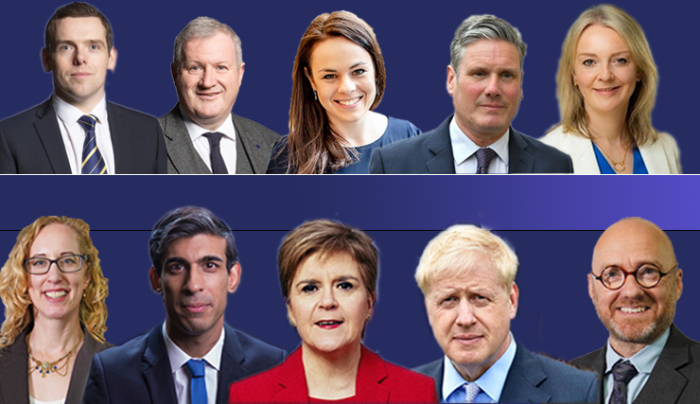What 2022 may bring in politics

2021 was another year of politics dominated by the COVID-19 pandemic. Whilst governments at Westminster and Holyrood have been buoyed up by the success of the vaccine programme, public reaction to each administration has been pretty stark.
From Christmas parties and secret affairs during lockdown, cash for curtains at Downing Street, to MPs second lobbying jobs, Boris Johnson’s Conservative Government has been rocked by scandal.
With a restless conservative backbench, and the by election loss of the uber safe Shropshire North to the Liberal Democrats, Johnson ended 2021 with a record low polling opinion of just 23% approval, and a resurgent Labour leading in the polls by six points.
A recovery may be possible before the UK General Election expected in May 2024 at the latest. Polls either put Labour on course for a majority, or the balance of power in the hands of the Scottish National Party (SNP). The latter would be an unprecedented outcome for UK politics as no party advocating the break up of the UK has held the balance.
In electoral and polling terms fortunes for Scotland’s First Minister Nicola Sturgeon couldn’t be more different, winning a fourth historic term in the 2021 Scottish Election with a record 48% of the constituency vote, but falling one short of an overall majority.
Having concluded a deal with the Scottish Greens seeing the first Green Government Ministers anywhere in the UK, Holyrood is back to majority government with an increased majority of seven for independence. Sturgeon still continues to significantly out poll all other Scottish party leaders, an enviable position after seven years in power.
Scotland was front and centre of global green politics as Glasgow hosted COP26 – the United Nations Climate Change Conference in November.
Whilst the final agreement may not have met all expectations, it would be hard to deny that new ambitions have been set for nations to transition to clean energy.
The passage of the Heat Networks Bill (Scotland) and the launch of the Green Jobs Workforce Academy closed the last Scottish Parliament. Ahead of May’s Scottish Election every political party made pledges to deliver a just transition to renewable energy, many of which Scottish Renewables campaigned for.
Appointing Scotland’s first Cabinet Secretary for Net Zero, Energy and Transport, and six Junior Ministers with responsibilities for clean energy and tackling climate change, Sturgeon’s first Programme for Government ‘A Fairer, Greener Scotland,’ of this parliament placed net-zero at the core of government policy, and the Scottish Budget has already made big pledges for renewable heat and green skills.
Meanwhile, the UK Government has made key announcements including the Heat and Buildings Strategy and support for tidal power setting new ambitions, whilst the biggest ever Contracts for Difference allocation round has opened aiming to secure 12GW of electricity capacity from an expanded range of technologies.
2022 will be marked by the absence of an election to Westminster or Holyrood, unless a surprise election is called.
With speculation of a leadership contest within the Conservative party, and senior figures rumoured to be on the move, the main show in town will be whether there’s a change of resident at Number 10 Downing Street.
If Johnson can steer the UK through the latest Covid strain and survive the party scandals, then he may recover his polling lead, though if it goes badly expect the letters to be flying into the 1922 Committee and a leadership contest to kick off.
There are still big issues at Westminster that need to be tackled to support Scotland’s renewable energy industry, least not a resolution to the damaging TNUoS transmission charging regime.
Local Elections to councils across all four nations of the UK this May will offer the electorate the opportunity to express their opinions. After 12 years in opposition all eyes will be on whether Sir Keir Starmer’s Labour party is able to mount a campaign which can achieve the resurgence needed to make the gains helping him to form a government in the next UK General Election.
With all of Scotland’s 32 local authorities up for grabs this May, Sturgeon will also face her first test of popular opinion since last year’s election victory. Will the SNP and Green vote hold up after they entered government together or will the Scottish Conservatives and Scottish Labour vote share be impacted by events at Westminster?
With the First Minister coming out against the Cambo oil field, expect heated political exchanges in 2022 on how to deliver a just transition for those communities impacted by our shift to clean energy.
At Holyrood we are seeing the National Planning Framework 4 reforms, which were delayed due to the pandemic, and the Energy Strategy Refresh appearing on parliamentary agenda. These reforms will be central to unlocking the economic, environmental and social potential of renewable energy.
It would of course not be a new year in Scottish politics without attention on constitutional politics. With Sturgeon committing to a referendum in 2023 but the UK Government refusing to grant consent, and the polls for the yes or no camp almost deadlocked, we should expect more constitutional wrangling over the future of Scotland.